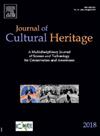From eye-tracking to games: exploring low-tech solutions for sustainable cultural landscape management
IF 3.3
2区 综合性期刊
0 ARCHAEOLOGY
引用次数: 0
Abstract
The development of cities to address social, cultural, and environmental challenges increasingly relies on new technologies. Eye tracking (ET) is one such method used to assess how urban developments impact the perception of architectural and cultural heritage. However, ET has limitations, including high costs and difficulties with certain populations. This paper proposes the use of games, specifically puzzles, as an accessible alternative for wider community engagement in urban planning. Although games are often viewed as less serious research tools, our study shows that they can produce results comparable to ET. A comparative analysis revealed significant correlations between how participants arranged architectural puzzles and their spatial perception of cultural landscapes. These findings suggest that games could offer a sustainable, low-cost method for evaluating urban development impacts on heritage sites. Future research should explore the broader applicability of puzzles and other game types in city management and heritage protection.
从眼球追踪到游戏:探索可持续文化景观管理的低技术解决方案
应对社会、文化和环境挑战的城市发展越来越依赖于新技术。眼动追踪(ET)就是这样一种方法,用于评估城市发展如何影响建筑和文化遗产的感知。但是,环境外治疗有其局限性,包括费用高和在某些人群中遇到困难。本文建议使用游戏,特别是谜题,作为更广泛的社区参与城市规划的一种可访问的替代方案。虽然游戏通常被视为不那么严肃的研究工具,但我们的研究表明,它们可以产生与ET相当的结果。比较分析揭示了参与者如何安排建筑谜题与他们对文化景观的空间感知之间的显著相关性。这些发现表明,游戏可以提供一种可持续的、低成本的方法来评估城市发展对遗产地的影响。未来的研究应该探索谜题等游戏类型在城市管理和遗产保护中的更广泛的适用性。
本文章由计算机程序翻译,如有差异,请以英文原文为准。
求助全文
约1分钟内获得全文
求助全文
来源期刊

Journal of Cultural Heritage
综合性期刊-材料科学:综合
CiteScore
6.80
自引率
9.70%
发文量
166
审稿时长
52 days
期刊介绍:
The Journal of Cultural Heritage publishes original papers which comprise previously unpublished data and present innovative methods concerning all aspects of science and technology of cultural heritage as well as interpretation and theoretical issues related to preservation.
 求助内容:
求助内容: 应助结果提醒方式:
应助结果提醒方式:


